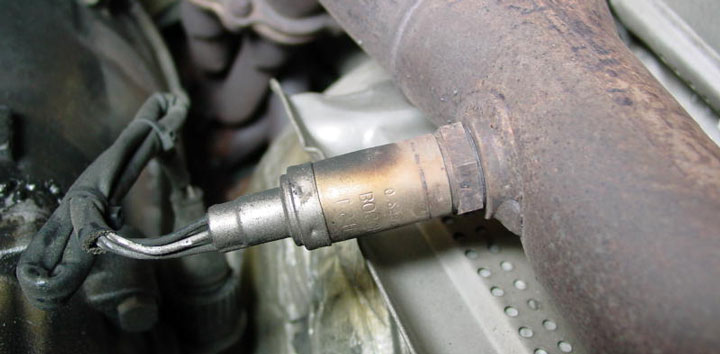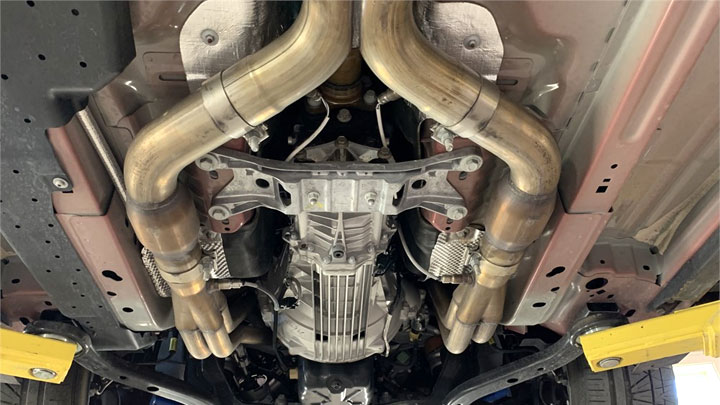P2098 Code (Symptoms, Causes, and How to Fix)
A well-balanced air-to-fuel ratio is necessary for an engine to run as efficiently as possible. When this delicate balance is off, it can lead to a variety of problems. This is the case when you discover a P2098 trouble code.
Keep reading to learn what a P2098 code means, what its most common causes are, how to properly fix it, and whether or not you can continue driving until the problem is resolved.

What Does Code P2098 Mean?
Today’s vehicles now all come equipped with oxygen sensors within their exhaust system. There are “upstream” O2 sensors that are located between a vehicle’s exhaust manifold and catalyst, as well as downstream sensors that are located after a vehicle’s catalytic converter.
Related: How to Locate a Bank 1 vs Bank 2 Oxygen Sensor
Sensors of both types play a major role in gauging air-to-fuel accuracies/inaccuracies, as well as catalyst efficiency.
In the case of DTC P2098, data relayed by a vehicle’s downstream post-catalyst O2 sensor(s) is representative of a lean condition, signifying that an over-abundant amount of oxygen is present within the exhaust system. More specifically, this discrepancy is logged as having been recorded within the engine’s #2 bank.
In most cases, the affected engine’s management software will attempt to rectify this perceived “lean” condition by fueling more heavily on the affected bank. While this corrective action is justified in the event that a truly lean condition presents itself, a “rich” condition will arise as a result, if false or unsubstantiated feedback was to blame for the perception of the previously-recorded lean conditions.
See Also: P2096 Code, P2097 Code
Symptoms of Code P2098

It is not uncommon for diagnostic fault code P2098 to be accompanied by a handful of secondary symptoms of varying severity. Oftentimes, recognizing these symptoms proves to be the first step in forming a sound diagnosis.
The following are a number of symptoms often associated with DTC P2098.
- Check engine light
- Erratic idle
- Reduced performance
- Multiple cylinder misfires
- Reduced fuel economy
- Superheating of internal catalyst media
Causes of Code P2098

Diagnostic fault code P2098 can be attributed to one of several potential root causes, some of which can be at least a bit tricky to pinpoint. Nonetheless, those familiar with these possibilities stand the best chance of diagnosing the issue at hand in the shortest amount of time possible.
The following is a rundown of the most common offenders, when it comes to DTC P2098.
- Upstream exhaust leaks
- Vacuum leaks
- Faulty MAP sensor
- Compromised MAF sensor
- Inconsistent upstream O2 sensor readings
- Damaged post catalyst O2 sensor wiring
- PCM/ECM failure
Is Code P2098 Serious?
Diagnostic fault code P2098, like most other O2 sensor related faults (there are many), should not necessarily be considered a showstopper, in terms of a vehicle’s driveability. You will most likely still be able to drive.
Nonetheless, this fault should not be ignored, as a number of symptoms associated with this fault are known to revolve around a noticeable reduction in engine performance.
Furthermore, you should also be aware that a true lean post-catalyst condition can pose an eventual risk to a vehicle’s catalytic converter itself.

A condition of this nature, if left untreated, can lead to the superheating of a vehicle’s catalyst, thereby causing failure once the assembly’s internal media has become compromised. In turn, replacement catalytic convertors are not cheap to purchase, or install. And you definitely don’t want to be driving around without a catalytic converter.
In any event, you should consider getting to the bottom of your vehicle’s P2098 fault at the first available opportunity. Doing so will lessen the likelihood of being forced to deal with secondary component failure, especially in the realm of catalyst deficiencies.
If you do not feel up to the task of diagnosing and repairing the root cause of your vehicle’s P2098 fault, professional help should be sought as soon as possible.
How to Fix Code P2098

The following can be referenced when attempting to troubleshoot your vehicle’s P2098 diagnostic fault. Additionally, it is always recommended to seek out factory-specific service literature for your exact model of vehicle before work commences.
#1 – Check for Additional DTCs
Before jumping headlong into the diagnostic process, you should check for the presence of additional diagnostic trouble codes with a quality OBD-II scan tool (I recommend one of these). If any other such faults are present, they should be diagnosed fully before proceeding.
#2 – Inspect ALL O2 Sensors
Begin by carefully inspecting each of the affected vehicle’s O2 sensors for signs of damage. The wiring and plugs for each sensor should be similarly inspected. Since P2098 is a comparative fault, it’s important to conduct these checks on all O2 sensors present.
#3 – View Feedback Data
Using a scan tool that has this functionality, watch and graph feedback from each of the affected vehicle’s O2 sensors, while an assistant drives. Look for any feedback the skews out of range per your vehicle’s manufacturer. Replace any sensors that present erroneous or invalid feedback.
#4 – Check MAP/MAF Sensor Feedback
In much the same manner as described above, verify that all feedback from the engine’s MAF and MAP sensors is within range. If not, proceed with troubleshooting the sensor/circuit in question, per manufacturer’s recommendations.
#5 – Check for Vacuum Leaks
Next, check for the presence of vacuum leaks with an automotive-specific smoke machine. Alternatively, an unlit propane torch can be wanted throughout the engine bay, while listening for an uptick in engine RPM, to locate difficult to pinpoint vacuum leaks. Any such leaks that are found should be repaired before proceeding.
#6 – Inspect For Upstream Exhaust Leaks
You will now need to hunt down and repair any pre-catalyst leaks within the exhaust system. These leaks can be found through physical inspection, or through the use of the above-mentioned smoke machine. Do not proceed until all exhaust leaks are satisfactorily repaired.
#7 – Troubleshoot Feedback Circuit
If after completing all previous steps, DTC P2098 persists, the feedback circuit of the bank #2 post-catalyst O2 sensor will need to be troubleshot. This should be done in accordance with factory-specific service recommendations, to minimize the risk of falsely condemning the vehicle’s PCM/ECM.
- 4 Causes of Smoke Coming Out of Your Car Vents - Jun 20, 2024
- 6 Reasons Why Your Car Won’t Start After Getting Gas - Jun 17, 2024
- P2196 Code (Symptoms, Causes, and How to Fix) - Jun 13, 2024
